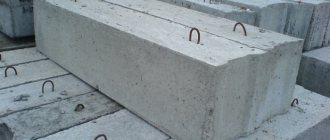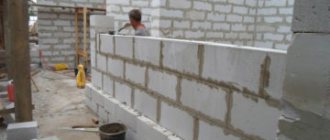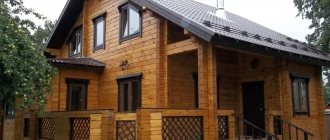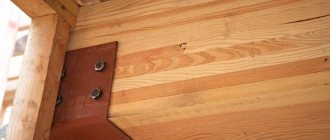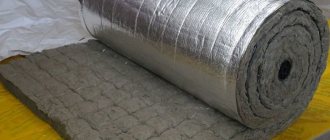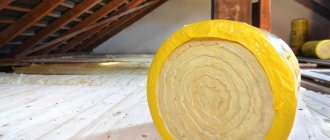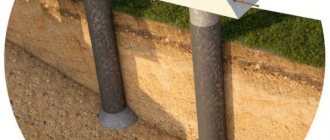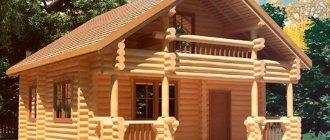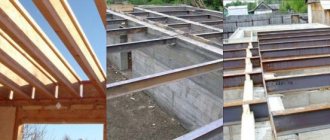Foam blocks. Typical sizes and their application in construction.
- Types of produced overall dimensions of foam blocks.
- Optimal foam block sizes for load-bearing walls.
- Foam block for internal partitions.
- Permissible discrepancies in the dimensions of the foam block.
- How to calculate the amount of foam block needed for construction.
- Conclusion.
Types of produced overall dimensions of foam blocks.
In the production of foam blocks, various overall dimensions are used.
The sizes have a standard step of 50 or 100 mm.
Typical block dimensions in width (mm) 50 / 100 / 150 / 200 / 250 / 300 / 400
The blocks have three standard heights (mm) 200, 250 and 300
The length of the foam block has a constant standard size (mm) of 600, less often 625mm
The most popular foam block sizes in construction:
100x300x600 / 200x300x600 / 250x300x600 / 400x300x600
The size range of produced foam blocks is determined by the standard standard sizes used by architects when designing residential and non-residential premises.
In determining the size of the width (wall thickness), a large role is played by the thermal conductivity qualities of the material and its use in a particular climatic zone. Thus, in a warm climate, a wall block thickness of 200 mm is used, in an average (temperate) climate the wall thickness is 300 mm, for a climate with sharp temperature fluctuations over several seasons, a block size of 400 mm is used.
In Russia, the standard foam block thickness used for the walls of a residential building is 300 mm with insulation (cladding) or 400 mm without insulation (under plaster). For the walls of utility unheated premises, foam blocks with a width of 200 and 300 mm are used.
Dimensions and weight of the foam block
The weight of the foam block depends on its dimensions and density. Manufacturers produce foam concrete building blocks that differ markedly in these parameters, each of which is designed for its own purposes: the construction of walls, partitions, and insulating structures. Let's take a closer look at the variety of technical characteristics of foam blocks in order to choose them correctly.
Foam block: technical characteristics
Porous foam concrete belongs to the class of lightweight concrete. It consists of a mixture of Portland cement, calcium silicate, sand with a quartz content of at least 75%, water and a foaming agent (bone glue, caustic soda, pine rosin, scrubber paste or hide glue). If desired, the manufacturer can add micro-reinforcing polypropylene fiber and fly ash to increase density.
Based on density grade, foam blocks are divided into 3 categories:
- Thermal insulation. Brands D300–D500, i.e. with a density from 300 to 500 kg/m³.
- For partitions and load-bearing walls. Brands D500–D900.
- For load-bearing walls, foundations, basements. Brands D1000–D1200.
Density directly affects thermal conductivity:
- Thermal insulating blocks have a thermal conductivity of 0.09–0.12 W/m·°C, which is approximately equal to the thermal insulating properties of wood.
- Foam concrete wall blocks have a thermal conductivity of 0.15–0.29 W/m °C.
- Blocks for load-bearing walls and foundations have a thermal conductivity of 0.29–0.38 W/m °C, which corresponds to the thermal insulation properties of ceramic bricks.
Foam block size
Foam concrete blocks can be 600 mm long, 200–400 mm wide and 100–400 mm thick. The last parameter indicates the thickness of the wall, which will be obtained from blocks of the selected size. The technology for manufacturing foam concrete allows the production of blocks of any size, but GOST 21520-89 limits their length to 600 mm.
The standard dimensions of the foam block are 600×300×200 mm. This is the most common format for building walls. One such block replaces 18.5 single bricks. For partitions, thinner blocks with a thickness of 100 mm are used, for load-bearing external walls - 300 mm thick, for thermal insulation - 200–400 mm.
When choosing foam blocks, pay close attention to their geometry. The ease of manufacturing foam concrete has led to the emergence of many handmade blocks, so their actual dimensions may differ significantly from those stated. When laying such blocks, you will have to constantly adjust them and use a large amount of mortar.
Weight of foam blocks
The weight of an individual foam block can be easily determined by multiplying its volume in m³ by the density indicated by the brand. Thus, a standard block of 600×300×200 mm has a volume of 0.036 m³, so with a foam concrete density of 700 kg/m³ it will weigh 25.2 kg. A high-strength block of the same size, but of the D1200 brand will weigh 43.2 kg, and a lightweight thermal insulating D300 will weigh 10.8 kg. Foam concrete is sold in cubic meters, which means the mass of 1 m³ will be as many kilograms as indicated in its density brand.
Compared to other building materials, foam concrete with a density of 300–1200 kg/m³ is one of the lightest.
Ceramic hollow bricks have a density of 1000–1400 kg/m³.
Solid ceramic brick - 1100–2000 kg/m³.
Solid sand-lime brick - 1100–1600 kg/m³.
Expanded clay concrete blocks - 900–1850 kg/m³.
Gas silicate blocks - 300–600 kg/m³.
Pine wood - 520 kg/m³.
Larch wood - 660 kg/m³.
Consultants of the online store “Kirpich.ru” will help you choose a reliable foam block, the size, density and frost resistance of which are ideal for your project.
Optimal foam block sizes for load-bearing walls.
For Russia, the most popular sizes of wall foam blocks are 200x300x600 and 400x300x600.
The most popular of them, the size 200x300x600, is used universally for walls with a thickness of 200 and 300 (mm) both for external walls and for indoor partitions. Residential and commercial buildings are built from it. Two sides of the block are used in width and height; depending on the required wall thickness, these parameters can vary with each other. This block is used in construction (according to thermal conductivity standards) together with a layer of insulation.
The second widely used size 400x300x600 is used only for the construction of external walls of a building, while the outside of the wall may not be insulated, but only finished with a layer of plaster.
Areas of use
The use of fiber foam concrete blocks is relevant in the installation of partitions between rooms of houses due to their light weight. And:
- during the construction of buildings and structures on a reinforced concrete frame;
- during the reconstruction of houses;
- for the construction of frameless buildings with a small number of floors;
- for the construction of cottages and attics;
- when installing monolithic belt formwork. Which includes installation of formwork, installation of reinforcement cage and pouring concrete solution. This method speeds up the construction process by eliminating the need to wait for the concrete to reach its strength characteristics;
- to create load-bearing structures;
- when pouring the foundation;
- for thermal insulation of internal walls;
- during the construction of industrial buildings;
- for installation of window and door lintels;
- Scope of application of fiber foam concrete.
during the construction of household premises and garages; - when constructing small-sized wall slabs and lintels for the construction of structures and buildings no higher than 3 floors. Thanks to this method, the use of fiber foam concrete products is highly effective for reducing installation time and improving the thermal insulation characteristics of structures;
- blocks based on foam concrete with the addition of fiber are used in the construction of small houses. Since the price and properties of the material will allow you to save on thermal insulation and the blocks will provide environmentally friendly components in the room.
Return to contents
Permissible discrepancies in the dimensions of the foam block.
When producing foam blocks, the parameters for the size and plane of the block must be strictly maintained. The maximum permissible error in size according to existing GOST rules can be no more than 5 mm. If the foam block has deviations from the declared dimensions by more than 5 mm, then this is a defect. When using such foam blocks when laying, you cannot use adhesives, but only a thick mixture of cement mortar, which leads to additional construction costs.
Foam blocks with broken geometry are subject to recycling or are sold with a reduced grade and a discount.
The process of constructing partitions
Partition installation diagram.
- Buy a glue stirrer. A regular drill with an attachment is suitable as a low-budget option. Dilute the solution with your own hands according to the instructions, then let it stand for about ten minutes and stir again. Make sure the mass is homogeneous.
- Clear the floor surface where the future wall will be located. Dust, debris, and uneven surfaces will prevent the glue from adhering to the material. If the surface has bulges and bumps, make a cement screed and let it dry well.
- Coat the block with glue and press it firmly to the floor. At the points of contact with the wall, the first and last blocks are secured using corners. In cases where the partition fragment is not long enough, cut out the missing part with a hacksaw from the whole block.
The blocks are placed on special glue.
- Doorways, arches and other elements are cut out with a hacksaw and marked using a stencil. Do not leave a gap of more than 2 mm between adjacent blocks. In openings wider than 90 cm, a block is laid in the upper part for support.
- The second and further rows are laid on glue according to the principle of a chessboard. The glue layer should not be more than 5 mm. Partitions are placed in the room from foam blocks, spreading glue first on the vertical and then on the horizontal seams.
- Keep in mind that the material tends to absorb moisture. If the room temperature is above +25⁰, moisten each block with water. Then it will not absorb glue excessively.
- If the partition does not touch adjacent walls, be sure to firmly attach it to the ceiling.
- Do not follow the advice of illiterate specialists who recommend leaving a gap between the partition and the ceiling and then filling it with polyurethane foam. This will not add strength to the structure, because the block can be easily adjusted to size by sawing it.
- Make internal partitions from foam blocks of sufficient thickness, and light ones from thinner parts. Interior walls should be thicker, and the bathroom section could be lighter.
The material is very easy to process.
Noise protection is of great importance. Few people want to hear every sound coming from the next room. Since the foam material has high soundproofing properties, with proper installation you will get silence in the apartment. According to test results, the partition foam block - the dimensions of which are only 10 cm thick and have a noise insulation index of R = 45 dB - ensures a comfortable stay in the room.
Until recently, brick was most often used as partitions. It has decent characteristics, is durable, retains heat well and blocks sounds. However, in terms of cost and installation speed, it is significantly inferior to modern foam concrete material.
Radial partition made of foam blocks.
For example, the cost of one square meter of a wall half a brick thick will cost from 1,500 rubles. The same wall made of foam concrete blocks will cost you several times less. In the latter case, the consumption of plaster will be minimal, since the clear geometry and convenient dimensions of the foam blocks for partitions will create high-quality, even masonry.
You also won’t have to spend money on insulation, since the properties of the material allow you to create warm walls. There should be no doubt about environmental friendliness, because the block consists of completely natural components - cement, water and sand with the addition of foam.
The final finishing can be done at your discretion. It could be drywall, lining, or just a smooth plastered and puttied surface.
What is the difference between a gas block and a foam block and which is better?
Aerated concrete and foam concrete are produced on the basis of cellular concrete. Both materials are environmentally friendly and completely safe for humans. However, there is a certain difference between them that should be taken into account when choosing building materials:
Production technology
Foam blocks are made from lime, cement, water, foaming agent and various industrial wastes. The resulting solution is poured into containers and hardens naturally.
The production of aerated concrete is carried out as follows: cement, quartz sand, water, lime and aluminum powder are mixed and pressed in an autoclave oven or hardened under high temperatures.
Block geometry
When figuring out whether an aerated concrete block or a foam concrete block is better, consider the following: the first has ideal shapes, while the second may have quite noticeable irregularities on its surface. The error in the geometry of gas blocks is no more than 1 mm. For foam blocks this figure often reaches 2-3 mm.
Thermal and sound insulation properties
Both materials are characterized by high frost resistance and excellent heat and sound insulation properties. However, gas blocks have a more precise geometry, which allows the construction of walls without “cold bridges”. In addition, foam concrete often has a heterogeneous structure: a large number of cavities accumulate in one place, while in another there are practically none. Because of this, the heat and sound insulation properties of the material can vary greatly.
Strength characteristics
The most durable and reliable option is autoclaved gas blocks. They are used in the construction of load-bearing walls in low-rise construction (up to three floors). Foam concrete - with a similar density - is less durable. Walls made of foam blocks require high-quality reinforcement.
Moisture absorption
This is the only parameter in which gas blocks are slightly inferior to foam blocks. Foamed concrete blocks do not absorb moisture well, while aerated concrete is characterized by pronounced absorbent properties. This parameter, however, also has a “downside”: walls made of aerated blocks can “breathe”, due to which a comfortable microclimate is formed in the house; foam blocks, in turn, practically do not allow steam to pass through, so the air in a building built from this material will be quite dry.
Now you know the difference between a gas block and a foam block, and you can accurately determine which is better. Foamed concrete is inferior to aerated concrete in a number of parameters, so aerated concrete is preferable in construction.
In the Keramik Group online store you can buy high-quality foam blocks from trusted manufacturers. Affordable prices for foam blocks. Delivery of orders is carried out in Moscow and other cities of the Russian Federation.
Recommendations for use
Before you start working with blocks based on foam concrete with the addition of fiber, you need to familiarize yourself with the recommendations of experienced builders. When doing the work yourself, you need to remember that the blocks contain components that are highly absorbent. This means that the solution needs to be prepared with a liquid consistency.
It is recommended that products made from blocks based on fiber foam concrete should not be left without appropriate finishing. After all, they can both decorate the appearance and serve as additional protection. When working with fiber foam concrete, it is important not to forget about the system of standards that is inherent in each manufacturing plant. Therefore, when ordering blocks, you need to clarify their dimensions in advance. The packaging of the goods must not be damaged, and the contents must correspond to the order.
Blocks based on foam concrete with the inclusion of fiber are recommended to be fixed using nails and dowels with an anti-corrosion coating for small loads, as well as special dowels, which are recommended by the manufacturer of fasteners for the cellular block for heavy loads.
Return to contents

